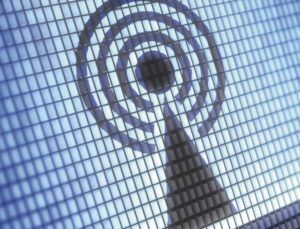In 2013, IEEE published the 802.11ac standard for very high throughput Wi-Fi, which has come to be known as Wi-Fi 5. The appeal of Wi-Fi 5 has fueled broad reaching adoption with steady growth over the past five years, accounting for more than 80% of access point shipments in 2017 and predicted to render previous Wi-Fi 4 (802.11n) products obsolete in enterprise WLAN deployments by the end of this year. And that’s no surprise — by concentrating signals and transmitting over multiple send and receive antennas in the less-crowded 5GHz spectrum, Wi-Fi 5 enables theoretical speeds that are more than 11 times faster than Wi-Fi 4!
Wi-Fi 5 Wave 1 devices hit the market a few years ago and supported speeds of up to 1.3 G/bs, and we are now seeing Wave 2 devices that can support speeds up to about 3.5 Gb/s. If you thought Wi-Fi bandwidth couldn’t get any higher, think again. IEEE is now working to boost Wi-Fi performance even higher with a new high-efficiency standard called Wi-Fi 6.
Targeted towards large public spaces where Wi-Fi 5 simply can’t keep up with the volume of devices (think crowded arenas or busy airports with hundreds of people trying to stream video at the same time), Wi-Fi 6 aims to deliver a single stream at 3.5 Gb/s with the ability to deliver four simultaneous streams for a total of at least 11 Gb/s. We won’t get into the technical details of how Wi-Fi 6 actually works, other than to state that it essentially doubles the streams of Wi-Fi 5 Wave 2 devices and leverages existing LTE cellular technology to further split the streams for four times the effective bandwidth.
Whether you’re just now upgrading to Wi-Fi 5, or already looking to deploy Wi-Fi 6, when it comes to choosing the cabling type to connect the latest 802.11 Wi-Fi access points, it should be category 6A shielded cabling or higher – hands down. And here are the top 3 reasons why:
1. Category 6A cabling is recommended by industry standards
TIA specifically states “Cabling for wireless access points should be balanced twisted-pair, category 6A or higher, as specified in ANSI/TIA-568-2.D, or two-fiber multimode optical fiber cable, OM3 or higher, as specified in ANSI/TIA-568-3.D.”
2. Category 6A cabling is the only way to achieve > 5 Gb/s throughput
Deploying two category 6A channels to access points is the only way to achieve multi-1 Gb/s link aggregation needed for immediate support of 1.3 Gb/s to 3.5 Gb/s 802.11ac Wave 1 and Wave 2 implementations, as well as multi-10 Gb/s link aggregation for future Wi-Fi 6 high-efficiency implementations. Learn more.
3. Category 6A shielded cabling is the best option for powering access points
The majority of 802.11 Wi-Fi access points are powered via power over Ethernet (PoE). Only category 6A shielded cabling or higher exhibits the heat dissipation and thermal stability to reduce length de-rating and bundling restrictions. Otherwise, you may need to reduce your channel length and bundle sizes to avoid increased insertion loss that can impact performance. Learn more.
There are additional cabling considerations to maximize performance and manageability of Wi-Fi 5 and Wi Fi 6 deployments, such as use of a zone cabling design methodology, plug-terminated links, solid conductor cords and higher temperature rated cables.
Stay tuned for more information on optimizing your next-generation Wi-Fi.




